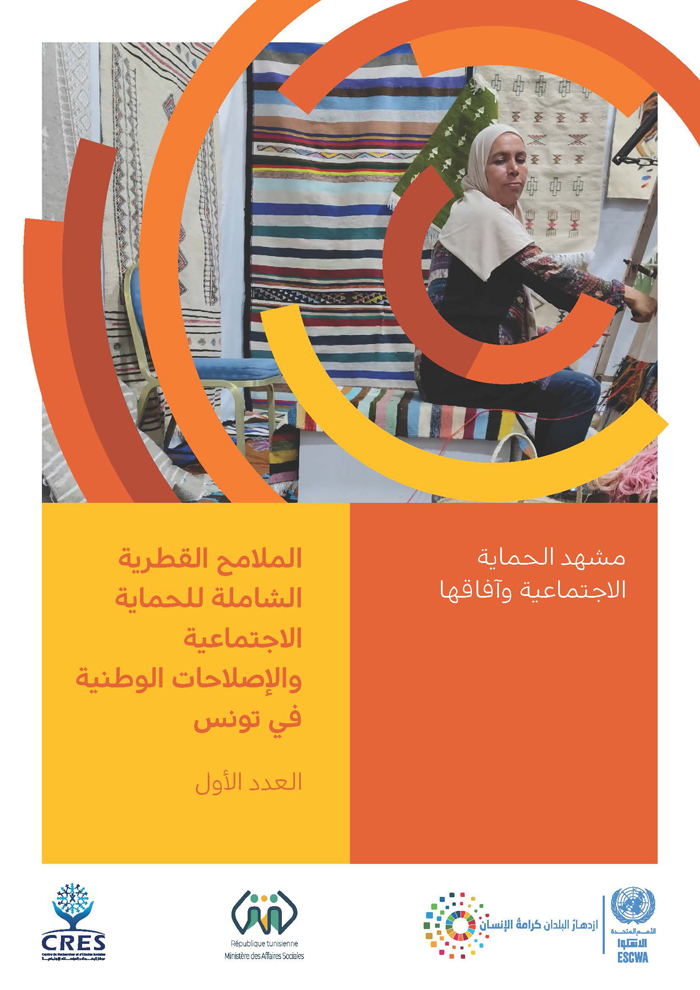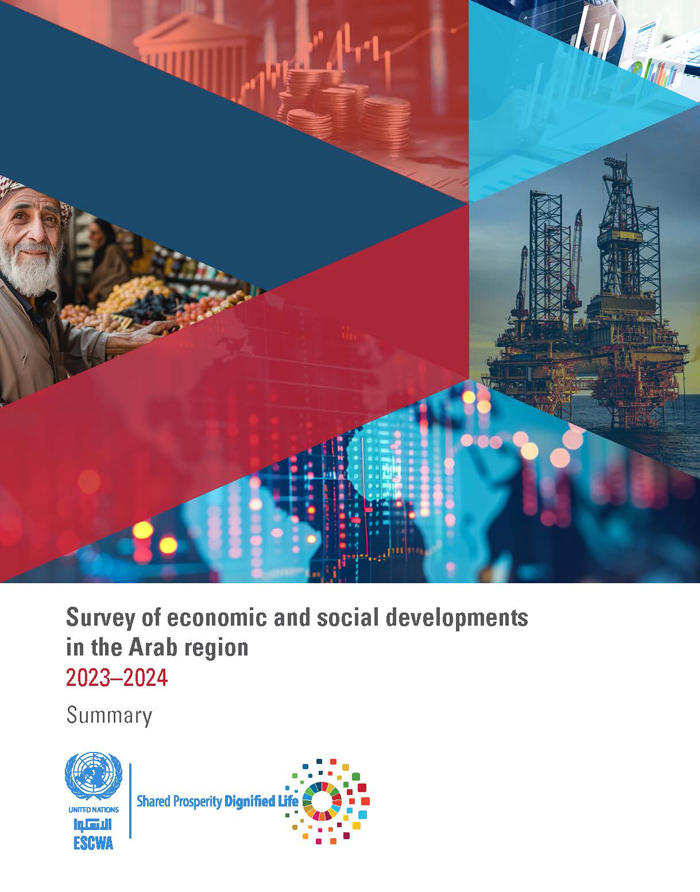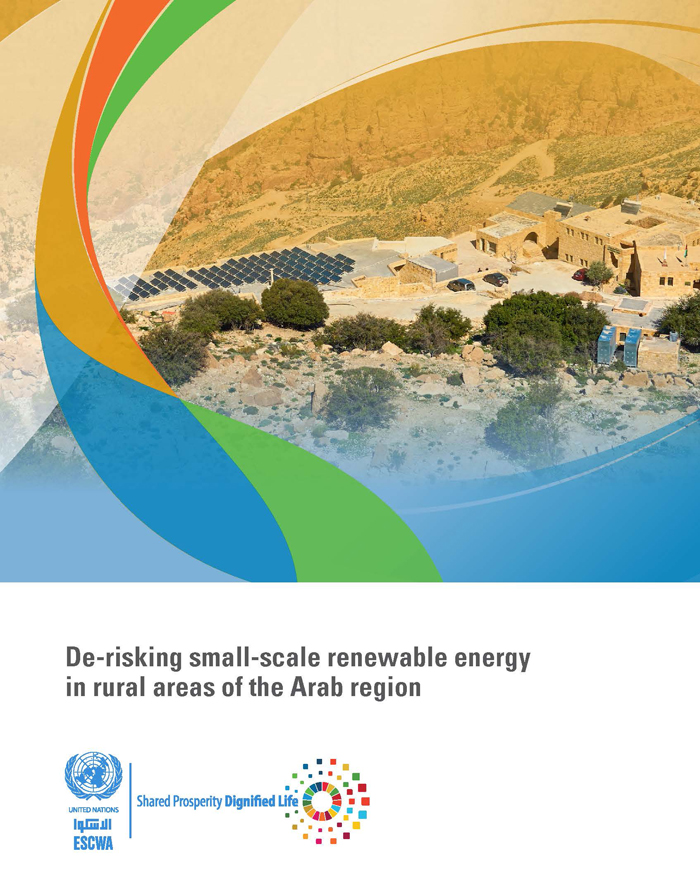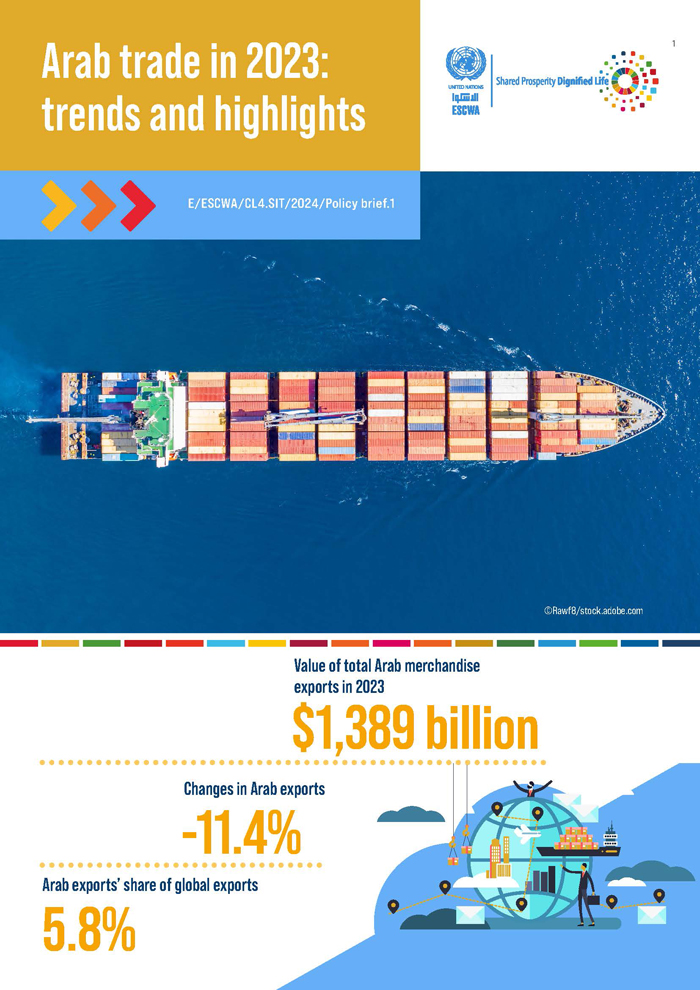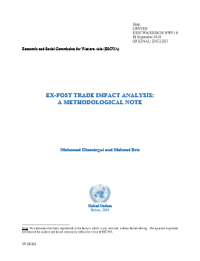
ESCWA Publication: E/ESCWA/EDID/2019/WP.16
Country: Arab region
Publication Type: Working papers
Cluster: Shared Economic Prosperity
Focus Area: Financing for development, Trade & regional connectivity
Initiatives: Blockchain for international trade
SDGs: Goal 8: Decent Work and Economic Growth
Keywords: International trade, Trade structure
Ex-Post Trade Impact Analysis: a methodological note
January 2019
This paper aims at providing technical details on trade indicators that are commonly and frequently used in ESCWA studies and assessments. The indicators presented in this paper are divided into three groups: i) region-level indicators; ii) reporter-partner level indicators; and iii) reporter-product level indicators. Most of these indicators are being used by the regional integration section at ESCWA in producing the trade structure and performance profiles for member states. These profiles, which represent an extension and not a replication of the existing profiles published by ITC and WTO, introduce a significant value added to the ongoing debate on the benefits and/or costs of trade integration schemas followed by most Arab countries since the conclusion of the Uruguay Round in 1994 and the creation of the WTO in 1995.
The indicators covered in this paper are by no means an exhaustive list but are selected on the basis of relevance for Arab countries. These indicators are used in ESCWA publications and readers interested in the technical details of how indicators are calculated should consult this study.
Nevertheless, ESCWA might build on this initial set of trade indicators and introduce new indicators, depending on the issues that come to the forefront in trade policy debates in the region. As new issues draw greater attention, ESCWA is planning to take into consideration new or modified trade indicators.
Related content
Financing for development
, Trade & regional connectivity
,
This paper aims at providing technical details on trade indicators that are commonly and frequently used in ESCWA studies and assessments. The indicators presented in this paper are divided into three groups: i) region-level indicators; ii) reporter-partner level indicators; and iii) reporter-product level indicators. Most of these indicators are being used by the regional integration section at ESCWA in producing the trade structure and performance profiles for member states. These profiles, which represent an extension and not a replication of the existing profiles published by ITC and WTO, introduce a significant value added to the ongoing debate on the benefits and/or costs of trade integration schemas followed by most Arab countries since the conclusion of the Uruguay Round in 1994 and the creation of the WTO in 1995.
The indicators covered in this paper are by no means an exhaustive list but are selected on the basis of relevance for Arab countries. These indicators are used in ESCWA publications and readers interested in the technical details of how indicators are calculated should consult this study.
Nevertheless, ESCWA might build on this initial set of trade indicators and introduce new indicators, depending on the issues that come to the forefront in trade policy debates in the region. As new issues draw greater attention, ESCWA is planning to take into consideration new or modified trade indicators.
